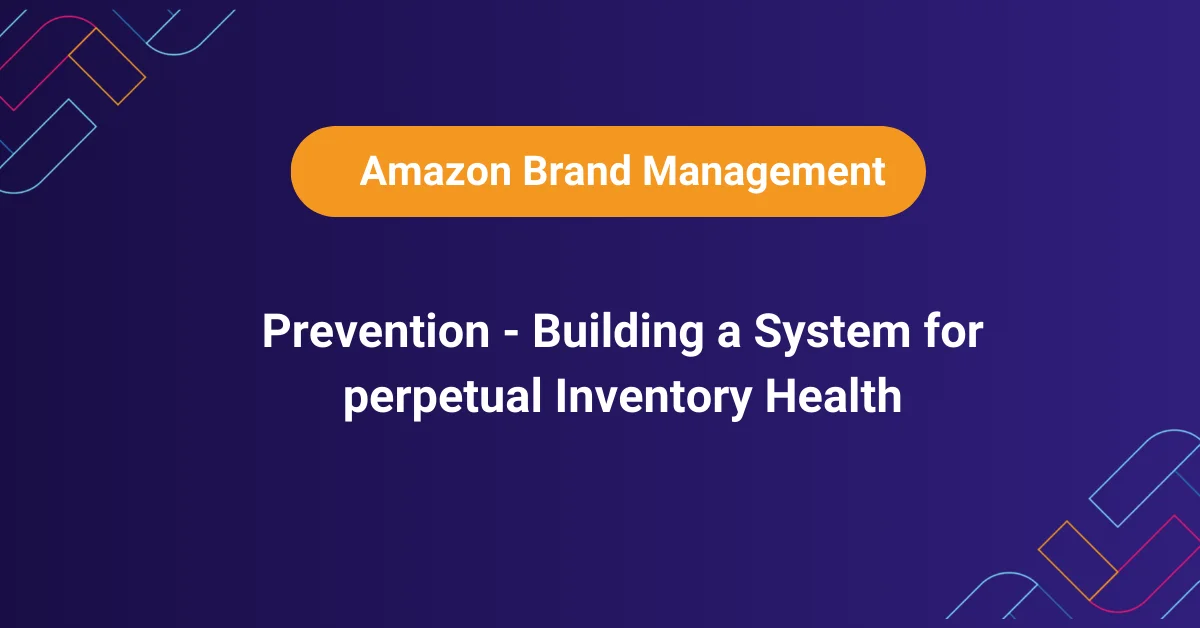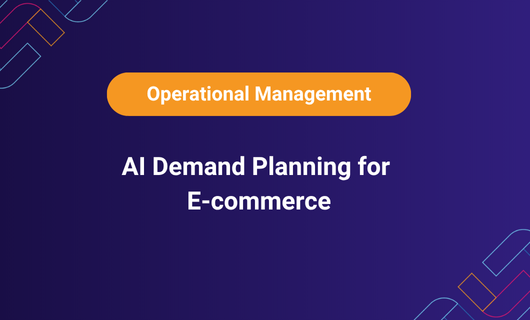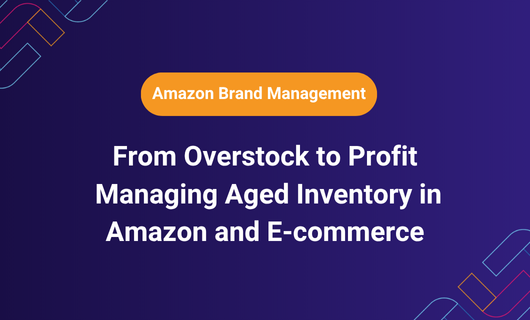That pallet of once-promising products has become your biggest liability, silently consuming profits through escalating storage fees and suffocating your cash flow. This stagnant stock isn’t just a missed opportunity; it’s an active threat to your Amazon seller health and your ability to scale. Implementing a powerful aged inventory solution Amazon strategy—combined with efficient multi-warehouse synchronization—is the difference between stagnation and growth. This definitive guide provides an actionable blueprint to transform your dead stock into working capital, eliminate punitive fees, and unlock unlimited selling potential by dramatically improving your IPI score. Let’s reclaim your cash and your momentum.
A Strategic Framework for Eradicating Aged Inventory on Amazon
This process is not about frantic, margin-killing discounts. It is a calculated, multi-phase operational discipline designed to systematically convert liability into opportunity. We will guide you through a diagnostic approach, a tiered action plan tailored to your inventory’s age and velocity, and a long-term prevention strategy. This framework, inspired by the principles in Mastering Amazon Inventory, focuses exclusively on maximizing recovered value and strengthening your fundamental Amazon seller metrics.
Deep Diagnostic - Quantifying the True Cost of Inaction
Before taking action, you must fully understand the enemy. “Aged inventory” is a category, not a monolith, and each type requires a slightly different approach.
Slow-Moving Stock: Units with a steady but insufficient sell-through rate, slowly eroding profitability.
Dead Stock: Units with zero sales in 6-12 months, representing a significant and growing financial drain.
Obsolete Stock: Products rendered unsellable due to seasonality, model updates, or irreparable market changes.
Your first command-center is the Inventory Health Report in Seller Central. Filter critically for:
Stranded Inventory (listings with active offers but no buyable quantity)
Units with 0 sales in the last 90+ days
All products currently incurring or projected to incur long-term storage fees
Calculating the Total Cost of Ownership
The sticker price is only the beginning. The true cost of holding aged inventory is a devastating equation: Original COGS + Accumulated Monthly Storage Fees + Long-Term Storage Fees + Opportunity Cost of Tied-Up Capital. That $10,000 skid of inventory could easily be costing you $500+ per month in fees and lost opportunity—capital that could fund new products, marketing, or expansion. For many sellers, understanding the difference between SCM and ERP can be the key to managing stock more strategically, reducing waste, and ensuring that capital is always working at its highest potential.
What is considered aged or dead inventory on Amazon?
Aged inventory typically refers to stock that hasn’t sold in 90-180 days and is beginning to incur higher storage fees. Dead stock is inventory with virtually no chance of a full-price sale, often sitting unsold for 6-12 months or more, actively accruing heavy storage fees and threatening your IPI score.
The Tiered Action Plan - From Quick Wins to Strategic Exits
A one-size-fits-all approach to inventory clearance is a fast track to leaving money on the table. The key to maximizing your recovery rate lies in a surgical, tiered strategy that matches the right tactic to each product’s specific profile—its age, velocity, and remaining market value. Think of it not as a liquidation fire sale, but as a strategic capital recovery operation. A slow-moving product from last season requires a different play than a completely obsolete component or a stranded bestseller. By precisely diagnosing the problem and applying a calibrated response, you transform blanket discounts into targeted value extraction, ensuring every SKU contributes the maximum possible return to your bottom line.
Tier 1: Amazon-Native Velocity Plays
Leverage Amazon’s built-in tools to create urgency and visibility without destroying your brand’s price integrity.
Amazon Outlet: An automatic, hands-off way to promote eligible aged inventory to a dedicated audience of deal-seekers directly on Amazon.
Strategic Coupon Deployment: A 20-30% off coupon is highly visible on search pages and can trigger the algorithm to boost your placement, leading to a velocity spike.
Lightning Deals & 7-Day Deals: Ideal for creating a finite window of urgency to clear a high volume of units quickly. Calculate if the 15-20% fee is justified by the accelerated cash recovery and IPI benefit.
Which tactics move aged units the fastest?
Aggressive, time-bound promotions like Amazon Lightning Deals or high-value coupons (30%+) typically generate the fastest sell-through by creating undeniable urgency and winning high-visibility placement on Amazon’s deal-focused pages.
How does aged stock hurt my business cash flow?
It acts as a capital sinkhole. The money tied up in dead stock cannot be used to purchase inventory of fast-moving products, fund advertising campaigns, or scale the business. Simultaneously, it generates ongoing storage expenses, directly reducing net profitability.
Tier 2: The Value-Add Transformation
When discounting alone isn’t enough, get creative. Transform your liability into a new, desirable asset.
Complementary Bundling: Artfully pair a dead SKU with a perennial bestseller (e.g., bundle an outdated phone case model with a top-selling screen protector and a pop socket).
Volume Kitting: Group multiple units of the same slow-moving product into a value-packed multi-pack (e.g., a 3-pack of a slow-selling shampoo).
Lifestyle Kitting: Combine products from different categories to create a complete solution kit (e.g., a slow-moving yoga mat + a resistance band + a digital workout guide = “Home Fitness Starter Kit”).
This strategy creates new ASINs, effectively resetting the sales history and perceived value of your old stock.
Do bundles really help sell slow-moving SKUs?
Absolutely. Strategic bundling allows you to effectively disguise slow-moving products by pairing them with high-demand items. This creates a novel, valuable offer that clears dead stock without training your customers to wait for deep discounts on your core products, thereby protecting your brand equity
Tier 3: Multi-Channel Liquidation
When Amazon-specific tactics are exhausted, look beyond the marketplace to protect your brand and recover value.
Your Own Shopify Store: Run a “Warehouse Clearance” or “Overstock Sale” on your owned e-commerce site. This isolates deep discounting from your Amazon listing, protecting your main product’s price point and review velocity.
B2B Liquidation Marketplaces: Platforms like Bulq, B-Stock, or Direct Liquidation allow you to sell aged inventory in bulk pallets or truckloads to professional liquidators. This is a fast way to recover 10-30% of your cost en masse.
eBay & Facebook Marketplace: Ideal for clearing odd lots, customer returns, or open-box products that are harder to sell as “new” on Amazon.
Can I run a multi-channel clearance sale safely without overselling?
Yes, but it requires precision. The non-negotiable tool is a real-time Order Management System (OMS) that syncs your inventory levels across all sales channels instantly. This ensures that a sale on eBay automatically deducts inventory from your Amazon and Shopify counts, preventing overselling and the resulting penalties.
Tier 4: The Final Cut - Strategic Write-Offs
When recovery isn’t feasible, make a smart business decision to stop the bleeding.
Amazon FBA Donations: This program provides a potential tax write-off and removes the inventory from your balance sheet without you paying for a removal order. It is often financially smarter than paying to have it disposed of or returned.
Professional Liquidation: For large volumes of unsellable goods, a dedicated liquidator will handle the entire removal process for a fee, offering a small cash payment or simply freeing you from the liability.
When should I liquidate instead of donate?
Choose liquidation if you need to recover any amount of cash immediately and the product still holds some residual market value. Choose donation if the product is effectively worthless; the goal is to avoid disposal fees and potentially gain a modest tax benefit, making it a strategic write-off.
The IPI Goldmine - How Clearing Stock Unlocks Amazon Growth
Executing your aged inventory solution Amazon plan delivers a powerful secondary benefit: a dramatic boost to your Inventory Performance Index (IPI). This score is heavily weighted on reducing excess inventory and improving sell-through rates—the exact outcomes of the tactics above.
Every unit you sell or remove through these strategies directly strengthens your IPI. A score above 600 (and ideally above 800) unlocks:
Unlimited Storage: Eliminate the fear of storage limits, especially critical during the Q4 peak season.
Lower Operational Fees: Drastically reduce or eliminate costly long-term storage fees.
Strategic Freedom: Scale your business aggressively without Amazon-imposed inventory constraints.
How do removal orders affect my IPI score?
Positively. Creating removal orders for aged inventory directly reduces your “Excess Inventory Percentage” and eliminates “Stranded Inventory,” two of the four key factors in the IPI calculation. This can lead to a direct and relatively quick score improvement in the next scoring period.
Prevention - Building a System for perpetual Inventory Health
Mastering the clearance of aged inventory is critical, but true operational excellence means building a system where it rarely accumulates in the first place. This final phase is about shifting your entire inventory philosophy from a costly, reactive scramble to a proactive, profit-protecting discipline. It’s about embedding intelligence into your procurement and forecasting processes so that your capital is consistently deployed toward velocity and growth, not tied up in stagnant stock. By implementing the right safeguards, you don’t just solve today’s problem—you future-proof your operations against the endless cycle of storage fees and write-offs, permanently strengthening your cash flow and competitive edge.

Implement Proactive Analytics and Forecasting
Move beyond spreadsheets. Utilize an OMS or inventory management software with predictive analytics to identify slow-moving trends early. Set alerts for when a product’s velocity drops below a critical threshold, allowing you to take corrective action before it becomes aged.
Adopt a Lean Inventory Philosophy
Embrace a just-in-time (JIT) replenishment model where possible. Order smaller quantities more frequently based on real-time sales data rather than large, infrequent shipments that increase your risk exposure.
Conduct Regular Portfolio Reviews
Schedule quarterly business reviews of your entire product catalog. Be ruthless in discontinuing poor performers and focusing resources on winners. A product’s end-of-life should be a managed process, not a surprise.
What’s the best way to prevent inventory from aging in the future?
Prevention requires a systemic shift: Implement an OMS with predictive analytics for accurate forecasting, adopt a lean/JIT replenishment strategy to minimize stock levels, and conduct regular product portfolio audits to discontinue underperformers before they become a cash flow problem.
Frequently Asked Questions
Aged inventory typically refers to stock that hasn't sold in 90-180 days and is beginning to incur higher storage fees. Dead stock is inventory with virtually no chance of a full-price sale, often sitting unsold for 6-12 months or more, actively accruing heavy storage fees and threatening your IPI score.
Aggressive, time-bound promotions like Amazon Lightning Deals or high-value coupons (30%+) usually create the urgency needed for the fastest sell-through.
Absolutely. Strategic bundling allows you to effectively disguise slow-moving products by pairing them with high-demand items. This creates a novel, valuable offer that clears dead stock without training your customers to wait for deep discounts on your core products.
Positively. Removal orders directly reduce your "Excess Inventory Percentage" and eliminate "Stranded Inventory," two of the four key factors in the IPI calculation. This can lead to a direct and relatively quick score improvement.
Choose liquidation if you need to recover any amount of cash immediately and the product still holds some residual market value. Choose donation if the product is worthless to avoid disposal fees and gain a potential tax benefit.
Yes, if you use a reliable Order Management System (OMS) to sync your inventory in real-time across all sales channels and prevent overselling on Amazon.
Implement proactive measures: use an OMS with predictive analytics for better forecasting, adopt a just-in-time (JIT) replenishment model, and regularly audit your product lineup to discontinue poor performers.
Call to Action
Stop Letting Old Stock Stall Your Growth
Aged inventory is not a passive issue; it’s an active operational failure that drains cash, consumes management time, and cripples your Amazon health. The strategies outlined are the same disciplined approaches used by top-performing agencies to liberate millions in trapped capital and secure unlimited selling potential for your clients.
Managing this complex process manually across Amazon, Shopify, and your 3PL is fraught with risk and inefficiency. You need a centralized system for clarity and control.
Ready to transform your inventory from a cost center into a strategic asset? Schedule a free, no-obligation call with our supply chain experts. We’ll conduct a deep dive into your last Inventory Health Report and provide a customized 30-day action plan to free your cash and boost your score. Schedule a Free Supply Chain Consultation.





